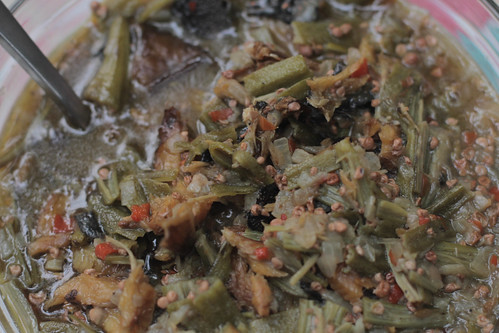What a convergence -- my 30th birthday, the one-third point for United Noshes, a gorgeous day, an apartment with a backyard...and a cuisine and culture renowned for good cheer around food. While German food rarely makes the rounds of haute cuisine, for those who enjoy meat and beer it's a wonderful, homey way to get a lot of calories. New York City used to have a distinct German immigrant population. Much like Chinatown today, Kleindeutschland in the Lower East Side and other enclaves around town featured whole communities where you'd see more German than English on the walls. Yet today the presence is a lot more subdued, and is hanging on best in the portion of the Upper East Side once known as Germantown. There are many reasons explaining the decline of the German identity, from the General Slocum disaster in which over 1,000 people capsized near shore, to xenophobia during the two World Wars.
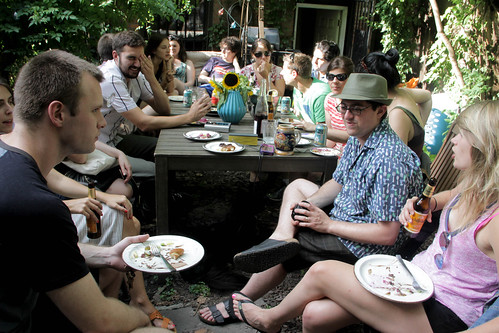
About thirty friends and members of the Noshing community passed through in the nine (!) hours the temporary backyard biergarten was open, including three visitors from California! Thanks to all who came for bringing so much beer and wine, too -- it was quite festive!
Aufschnitt | Cold cuts 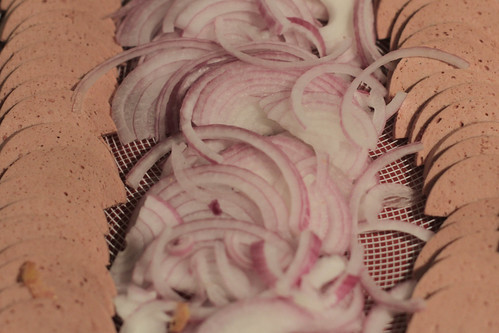
German food is chock-a-block with preserved meats. To get the party started, I set out a few different kinds. Pictured above is liverwurst; sometimes it's more of a spread but this is the Braunschweiger variety, originating from near Hanover, which is firm enough to slice, and goes great with some onion on a bit of pumpernickel bread. We also had two air-dried ones: Landjäger, from the south, which is like a thin square salami, and smoked bratwurst. To round it out, we enjoyed the rich and appropriately named Butterkäse -- käse means cheese and I'll let you figure out the other part.
Brezeln | Pretzels | Recipe

I've always loved the distinctive flavor of pretzels, that oddly salty nuttiness, most enjoyable a crisp crust and a soft inside. The process was really enjoyable: a quick rise, a supple dough to roll and twist, a quick boil in a baking soda bath to lend the distinctive flavor, and a moderate bake. (In fact, the one modification I'd make to the recipe is to cook at more like 400 or 425, rather than 450, to get it to really bake through -- the crust will darken plenty even at a lower temp thanks to the baking soda.) Since I didn't want to spend my birthday party leashed to the stove, I figured out (with help from my buddy PJ at King Arthur Flour) how to prep and freeze them ahead of time while serving them nice and hot, right in time. I made them the whole way through but pulled them just as the crust was starting to brown, froze them on sheets until mostly hard, and put them in plastic bags and back into the freezer. A few days later, I thawed them for about an hour at room temperature, and put them on a 350 oven for maybe 15 minutes until the house smelled great. Done! I think they turned out even better this way than the original recipe, because the second bake really cooks them through and also lends a pretty thick and crispy crust. However you judge it, I made 65 pretzels and they all disappeared!
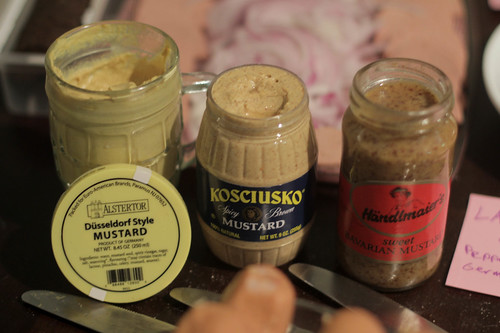
If you end up making these pretzels -- and you should! -- make sure you get some good mustards to go with it. We had a straightforward, medium-sharpness yellow mustard, a spicier one, and my favorite, a sweet rich Bavarian. Each brings out a different aspect of the pretzel, and taking your time to decide which mustard is your favorite is a great excuse to eat more pretzel.
Rheinlander Sauerbraten | Sweet and sour pot roast | Recipe
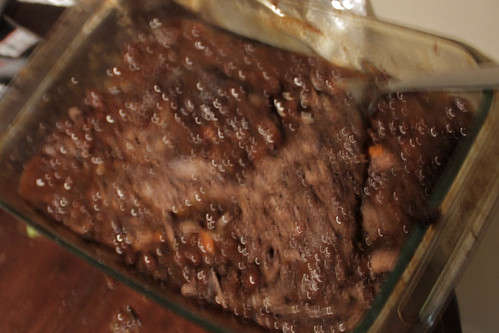
Don't worry, even if the photo were in focus, this dish wouldn't look like much. But whatever soaking three days in a spiced vinegar sauce followed by several hours of stovetop stewing and a dusting of raisins does to make a hunk of beef look unattractive, it sure makes it flavorful. This dish has been enjoyed in Germany for a very long time -- both Julius Caesar and Charlemagne have been credited with its invention -- and the meaty sourness, balanced a bit by the sweetness of gingersnaps and raisins, is still a winner.
Würste | Sausages

While I try to make as much as possible from scratch, I draw the line at sausages. It was surprisingly difficult to find a good variety of German sausages around New York -- Fairway, normally a reliable source of European foods, really came up short. So I headed up to Yorkville on the Upper East Side, an area once well-known as Germantown, to Schaller and Weber. It was tough to choose from their wide variety, but I ended up with delicate Weisswurst, richly spiced and smoked Bauernwurst, and then the famous Bratwurst, which I bought raw, and simmered in beer before grilling. As all the sausages were fully cooked ahead of time, grilling was just for temperature and texture, so I did it with the cover up.
Rotkohl | Stewed red cabbage with apples | Recipe 
The classic German stewed cabbage is tender, with a good balance of sweet and sour. While this fulfilled all those elements, it was kind of lacking in depth. The dish was pleasant enough, but didn't really beg to be scarfed down like some versions of these dishes I've found. Not sure what the problem is -- maybe shredding with the Cuisinart made the cabbage too fine, or something?
Berliner Kartoffelsalat | Vinaigrette potato salad | Recipe 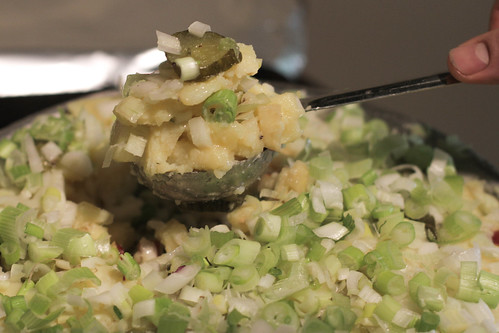
Most German potato salads don't have mayonnaise, and I like them for that. This recipe, which makes an unsubstantiated claim of being from Berlin and therefore helped me round out the geography, is pretty clever, using juice from the pickles as the sour base for the vinaigrette. I'd say it was all right, but it probably could have used more vinegar to really make the flavors sing. I also probably overcooked the potatoes a bit, which might have made things mushier than ideal.
Schwarzwälder Kirschtorte | Black Forest cake | Recipe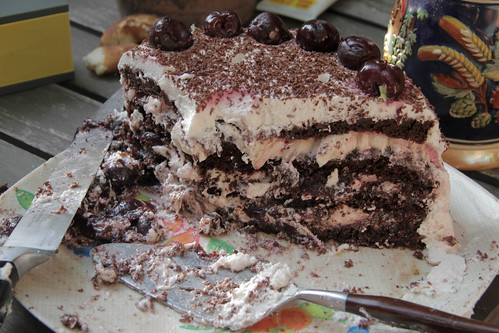
I didn't feel like I should be making my own birthday cake, so Laura agreed to do it. She even knew what she'd make, a German chocolate cake. Imagine Laura's surprise when she discovered that such a cake is actually American in origin, invented by a certain Sam German working at a chocolate company! Thank goodness our friend Lisa came to the rescue with this cake, which is so German that it was one of two national submissions to a Europe-wide cake fest. Four layers of deep chocolate, generously separated with buttercream studded with cherries, and then evenly sprinkled with shaved chocolate...wow. I might have a German-themed birthday party every year just so I have an excuse to get this cake!
We're about to start into a 16-state, 4500+-mile road trip, and our first stop is to the Jersey Shore where we'll do the Greece meal!
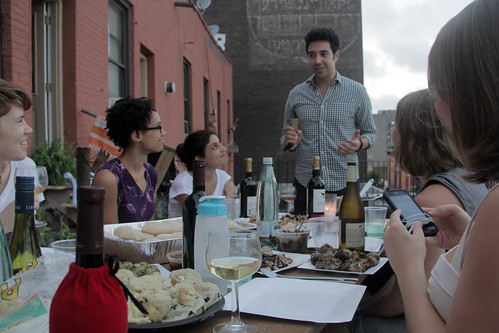

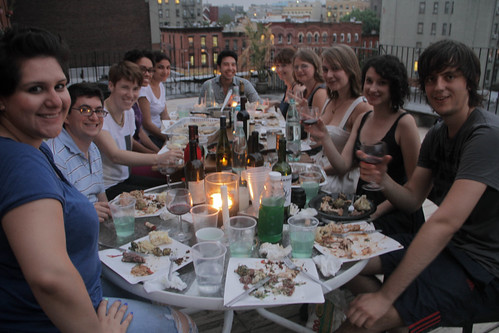

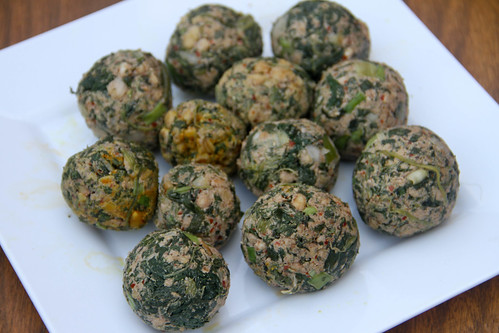
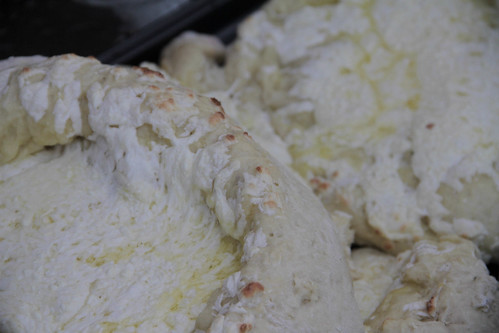

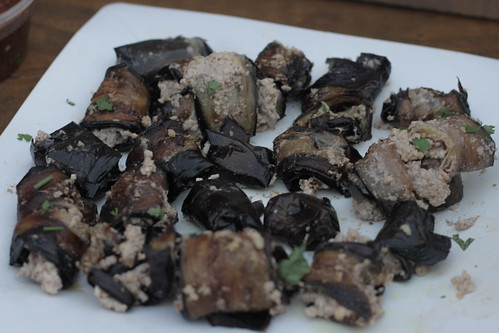
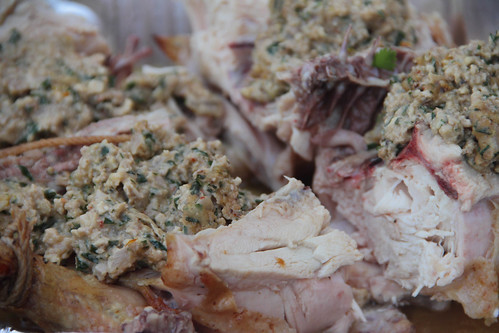

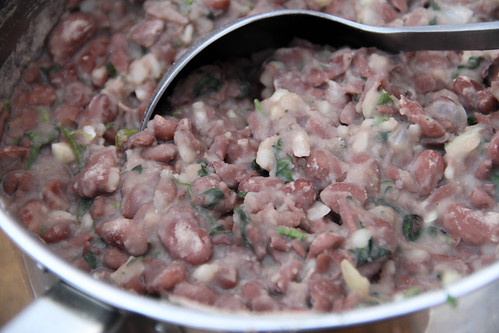

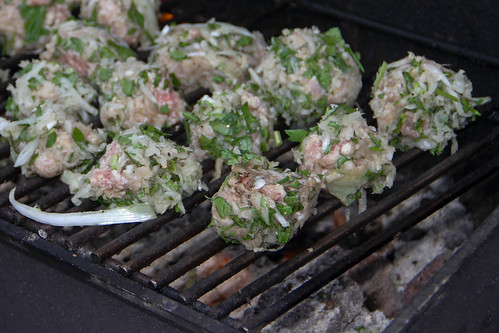

 The Gambia, a former British West African colony, is a little sliver of a country, hugging a river of the same name and surrounded by the formerly French Senegal. I find it appropriate that we held this Nosh in Portland, Oregon, a riverine city -- and, thankfully, one that has a few African markets!
The Gambia, a former British West African colony, is a little sliver of a country, hugging a river of the same name and surrounded by the formerly French Senegal. I find it appropriate that we held this Nosh in Portland, Oregon, a riverine city -- and, thankfully, one that has a few African markets!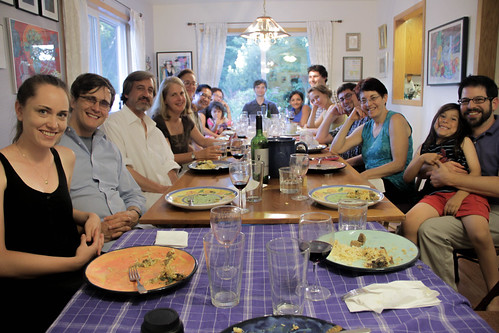
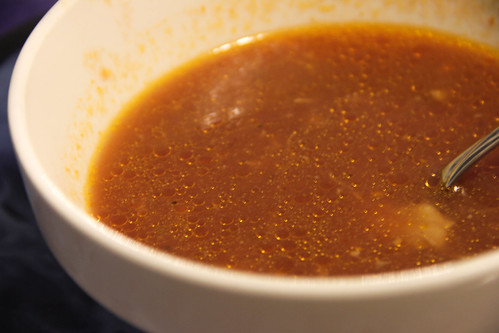
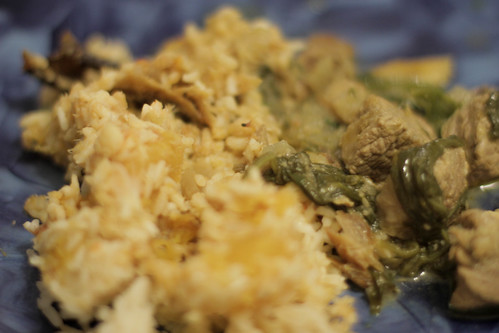
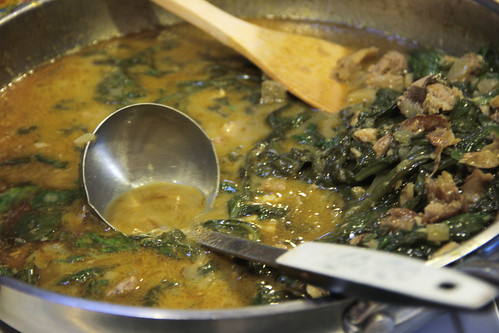
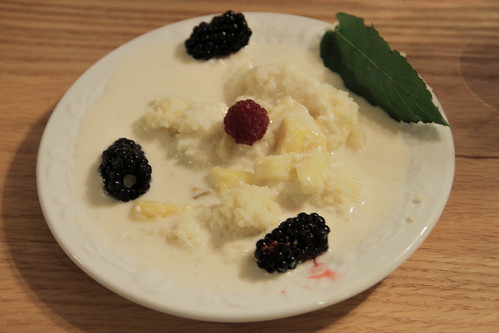
 New letter, new season, new home! After a week of unpacking our new place in Fort Greene - let's be honest, a lot of the work was setting up the kitchen! - we hopped right back into Noshing, which happened to be the first weekend of summer. We kicked off the G's with a meal from the west-central Francophone African country of Gabon, with the sultry weather giving us as good a taste of the tropics as we could have wanted.
New letter, new season, new home! After a week of unpacking our new place in Fort Greene - let's be honest, a lot of the work was setting up the kitchen! - we hopped right back into Noshing, which happened to be the first weekend of summer. We kicked off the G's with a meal from the west-central Francophone African country of Gabon, with the sultry weather giving us as good a taste of the tropics as we could have wanted.


